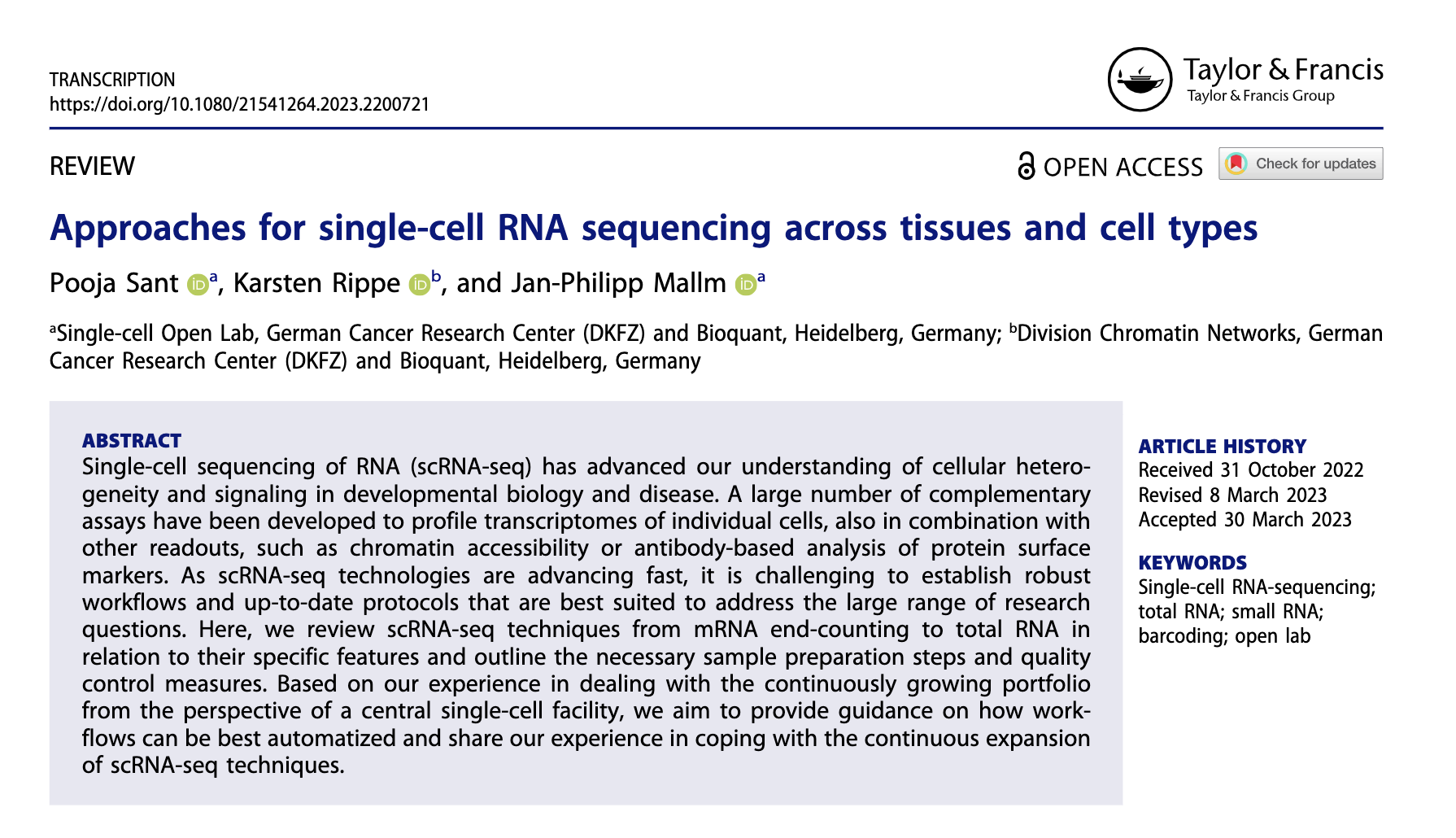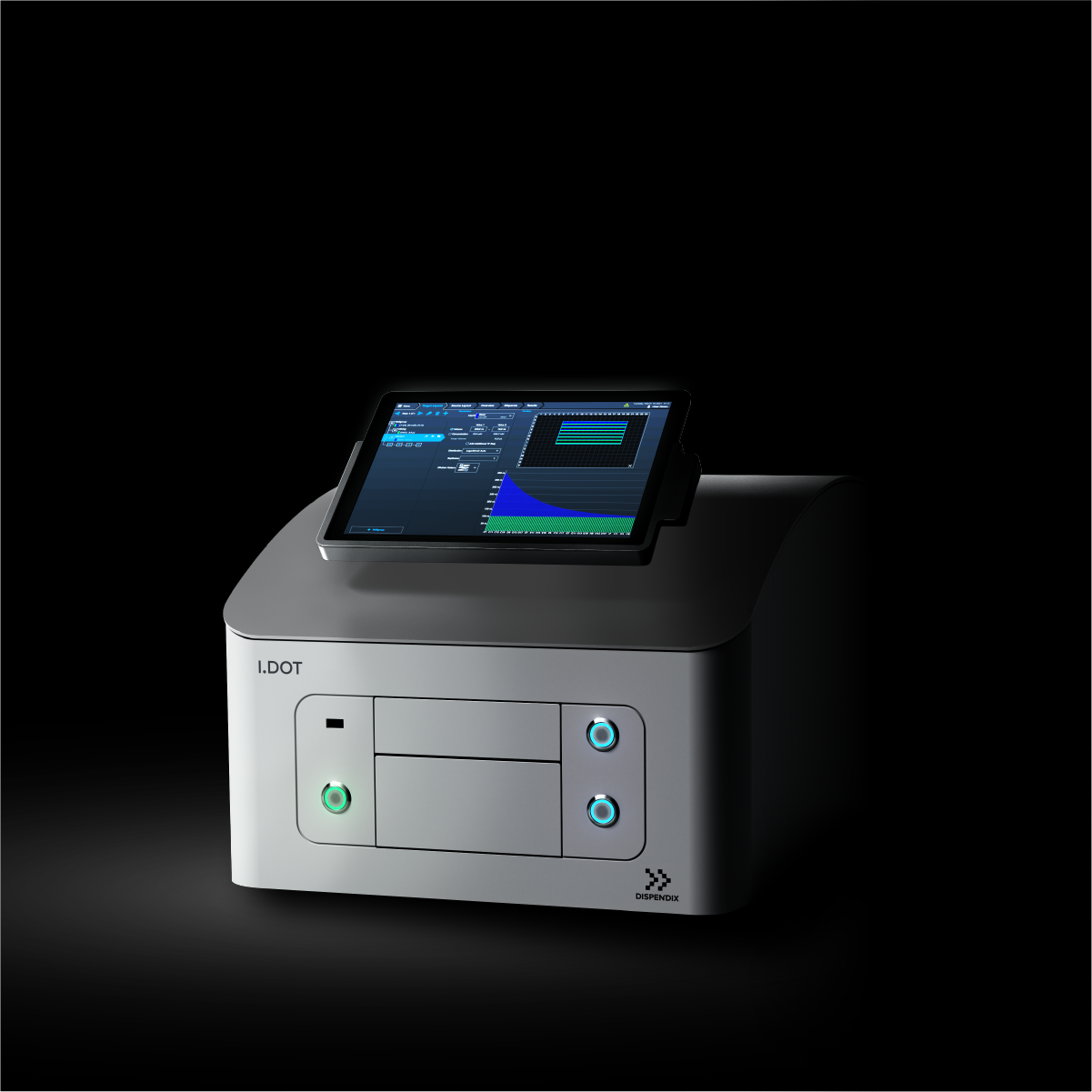The study of individual cells has taken a leap with single-cell RNA sequencing (scRNA-seq), revealing hidden aspects of development and disease. While researchers now have a diverse collection of methods for examining these single-cell transcriptomes, keeping up with the rapidly evolving field has become a hurdle.
This review, Approaches for single-cell RNA sequencing across tissues and cell types by researchers at Single-cell Open Lab and the Division Chromatin Networks at the German Cancer Research Center (DKFZ) (Fig. 1), addresses this challenge by outlining the main scRNA-seq techniques, from basic mRNA counting to comprehensive total RNA analysis. It also guides readers through essential sample preparation and quality control procedures.
 Figure 1. Screenshot of the review Approaches for single-cell RNA sequencing across tissues and cell types in the publication Transcription.
Figure 1. Screenshot of the review Approaches for single-cell RNA sequencing across tissues and cell types in the publication Transcription.
Drawing on their experience at a central single-cell facility, the authors further provide insights into workflow automation and offer practical tips for navigating the ever-expanding world of scRNA-seq technologies. This review aims to equip researchers with the knowledge and tools to make the most of single-cell sequencing and reveal the scientific truths within individual cells.
Minimizing Tip Costs in scRNA-seq
The authors discuss numerous technologies in this review. The tools that we were most interested in highlighting were automated liquid handlers. Standard robotic workflows can significantly reduce manual human involvement, improve library quality consistency and ultimately save a lab time and money.
Classical liquid handling systems like the Bravo (Agilent Technologies) offer accuracy and flexibility, but transferring programs between disparate hardware systems can be tricky and writing new ones requires expertise.
For this reason, smaller volumes and compatibility with 384-well plates, user-friendly options like Mosquito (SPT Labtech) dispensers are available. However, considering the high cost of tips, contact-free dispensing systems like Mantis (Formulatrix) or the I.DOT Liquid Handler (DISPENDIX) are worth exploring for long-term cost efficiency.

The Power of Nanoliter Precision
When you're ready to oost productivity and slash costs by eliminating the need for costly tips, it's time to meet the contact-free microfluidic dispenser that's transforming workflows across life science research. It's time to meet the I.DOT Liquid Handler.
- Dispenses volumes as low as 4 nL, unlocking new possibilities in miniaturization.
- Handles a wide range of liquids, from enzymes and magnetic beads to cells and buffers.
- Intuitive software makes it easy to use for anyone, regardless of automation experience.
- Compact footprint fits seamlessly onto your lab bench.
- Ready to experience the difference
Request a demo today and let the I.DOT Non-contact Dispenser take your research to the next level.
References
Pooja Sant, Karsten Rippe & Jan-Philipp Mallm (2023) Approaches for single-cell RNA sequencing across tissues and cell types, Transcription, DOI: 10.1080/21541264.2023.2200721